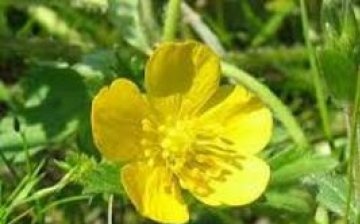Creeping buttercup
Buttercup creeping is a plant from the Buttercup family that grows in Asia, Europe, North-West Africa. Buttercup creeping grows on shaded, moist, alluvial soils, it is found on the shores of lakes and rivers, in wet meadows, in forest swamps, in shrub thickets, in fields, vegetable gardens. Buttercup prefers substance-rich, heavy, moist, poorly aerated soil, as well as peat bogs.
Buttercup creeping is a perennial and herbaceous plant about 15-40 centimeters high. It has a short and branched rhizome. The stalk of the buttercup is ascending or creeping, rooting at the nodes, juicy, thick, shortly pubescent or bare. Leaves are trifoliate basal, petiolate, consist of deeply tripartite, rhomboid-ovate, non-toothed leaves. Upper leaves are lanceolate, sessile, tripartite.
Buttercup flowers are regular, bisexual, they have five protruding sepals, five golden yellow petals and numerous stamens and pistils. The corolla has a diameter of about 2-3 centimeters. Buttercup peduncle is clearly furrowed. There are single apical flowers, which can also be collected in a semi-umbrella. Buttercup creeping blooms in June. The buttercup fruit is a multi-nut root with short noses near the nuts.
Buttercup creeping is a weed, it is poisonous. Buttercup creeping is widespread, it is of great importance for vegetable and row crops. It is less significant for cereals. It is a surface growing cereal, buttercup fills in lunges in hayfields, in pastures it is a valuable plant.



